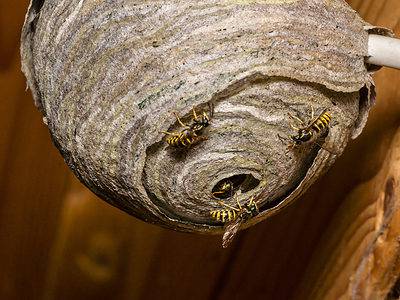Leptocephali have flat bodies filled with jelly-like substances, surrounded by a thin layer of muscle.
Advertisement
Leptocephalus Scientific Classification
- Kingdom
- Animalia
- Phylum
- Chordata
- Class
- Actinopterygii
- Order
- Anguilliformes
- Family
- Ophichthidae
- Genus
- Leptocephalus
- Scientific Name
- Leptocephalus brevirostris
Read our Complete Guide to Classification of Animals.
Leptocephalus Conservation Status
Leptocephalus Facts
- Prey
- Aquatic insects, crustaceans, certain fish species.
- Name Of Young
- Leptocephalus
- Group Behavior
- Solitary
- Fun Fact
- Leptocephali have flat bodies filled with jelly-like substances, surrounded by a thin layer of muscle.
- Biggest Threat
- Habitat loss
- Most Distinctive Feature
- Transparent bodies
- Predators
- Tuna, lancetfish, dolphin fish, rainbow runner, Skip Jack, yellowfin
- Diet
- Omnivore
- Common Name
- Leptocephalus
- Number Of Species
- 300
- Location
- Worldwide
Leptocephalus Physical Characteristics
- Skin Type
- Scales
View all of the Leptocephalus images!
The leptocephalus is an eel’s transparent, flat larva, and its name means “slim head.” They belong to the superorder Elopomorpha, which is one of the most diverse groups of teleosts. This group contains over 800 species within 4 orders, twenty-four families, and 156 genera.
Researchers believe this group originated in the Cretaceous period, 140 million years ago. There are 16 different families and 70 species of leptocephalus organisms.
Leptocephalus Scientific Name
Leptocephalus species include the European eel (Leptocephalus brevirostris) and the American eel (leptocephalus grassii). They belong to the order Anguilliformes, which consists of 15 families, including:
- Moray eels
- Spaghetti eels
- Worm eels
- Cutthroat eels
- Snipe eels
- Conger eels
This order is also referred to as true eels, and members generally have long, slender bodies with elongated dorsal and anal fins. In addition, the pelvic fins are absent, and certain species lack pectoral fins. They are typically smooth, but some species have scales embedded in their skin.
Letocephalus are members of the Ophichthidae family, which includes species like the snake eel. This family consists of around 300 species in 59 genera. In addition, they generally reach a maximum length of 10 feet. However, most species are much shorter.
They typically thrive in tropical waters, where they can survive in multiple habitats, including coastal mudflats, shallow coral reefs, mangroves, and rivers.
Leptocephalus Appearance
Leptocephali have flat bodies filled with jelly-like substances, surrounded by a thin layer of muscle. Their gut is a simple tube, and they lack pelvic fins.
In addition, these larvae don’t have any red blood cells. However, this changes once they develop into their juvenile stage. The leptocephalus size varies depending on the species, but they generally measure around 2 to 4 inches, although their maximum length is approximately 12 inches.
Leptocephalus Behavior
While leptocephali are slow swimmers, they have the extraordinary ability to migrate. In addition, these larvae have the rare ability to swim backward, which helps them to retreat quickly if in danger.
These creatures are considered solitary; however, they do congregate in large numbers during certain circumstances.
Leptocephalus Habitat
The leptocephalus can be found in diverse habitats, including streams, oceans, freshwater bodies, coral reefs, brackish rivers, or estuaries. Some members of this species live in fresh water and migrate to the sea when ready to spawn.
Some leptocephalus species are pelagic; however, most are found in coral reefs, rocks, or burrowing in soft substrates. For example, moray eels and congers generally inhabit rock crevices and coral reefs. But although they favor these habitats as adults, all larvae form part of the marine plankton at some point in their life cycle.
Leptocephalus Diet
Leptocephali are generalists and opportunistic feeders and devour any sort of food source in their proximity. This can include:
- Aquatic insects
- Crustaceans
- Certain fish species.
Their feeding behavior differs from specie to specie. For example, the snubnosed eel (Simenchelys parasitica) burrows into the tissues of certain fish species. Once inside, they will attach themselves to the fish’s heart and drain the blood from the organ.
Other species are lazy and will feed on dead marine animals that lay at the bottom of the ocean, whales included. While they have a wide variety of food to choose from, they are also the prey of many animals. Their biggest predator is other types of fish. However, once the leptocephali grow larger, their predators increase.
Leptocephalus Predators and Threats
Here is a list of various predators that prey on leptocephalus:
- Tuna
- Lancetfish
- Dolphin fish
- Rainbow runner
- Skip Jack
- Yellowfin
While there are no conservation statuses for any of the anguilliform species on the IUCN Redlist. Their ecosystems are being destroyed by pollution, and habitat loss, especially the species living in freshwater bodies and coral reefs. So, it’s plausible that some species of leptocephali are experiencing population declines.
Leptocephalus Reproduction, Babies, and Lifespan
There is not much known about eel reproduction. However, scientists have been able to uncover some details. For example, these larvae mate during the last stage of their lives. This is because they start foraging and eating in groups, encouraging their reproductive organs to form.
In addition, eels tend to migrate to a specific breeding site. For example, European and American eels travel to the Sargasso Sea, while Japanese eels migrate to the Suruga seamount. In addition, South African eels head north of Madagascar to the depths of the Indian Ocean, and the New Zealand longfin eel travels to the nation of Tonga. After reproduction, all species of eel give birth and die shortly afterward.
Leptocephalus Life Cycle
The leptocephalus has unique life cycles, which include four distinct stages from embryo to adult. When they hatch, they are flat and transparent, which is called the leptocephali phase. During this stage, they drift about the sea, eating whatever crosses their paths for nourishment until they develop into glass eels.
During the second phase, some species will travel from saltwater to freshwater; however, many species remain in the ocean their entire lives.
Once they reach the third stage, they develop into elver and start to move further upstream. Once they are fully developed, they stay in the freshwater habitat until the ocean calls them back to mate.
Lifespan
The leptocephalus have relatively long lifespans for larvae; they can live up to two years old.
Species Similar to the Leptocephalus
Many species are similar to the leptocephalus, and they include:
Conger Eel
The conger eels’ scientific name is Conger conger, and they reside in the deep oceans of the Black sea, North Atlantic Ocean, Mediterranean Sea, and Atlantic from northeastern Florida to Massachusetts and the Gulf of Mexico. These eels are one of the smoothest marine animals, varying in color from black, blue, and gray.
Moray Eel
Moray eels prefer temperate and tropical ocean habitats. There are 220 species of moray eels in 16 genera. They have long dorsal fins that run down the length of their bodies and don’t have pectoral and anal fins.
Moray eels have prominent eyes that sit on a large head, making them intimidating. In addition, their bodies are covered in mucus that prevents injury while they graze along the coral reefs. Their color varies from yellow, green, orange, black, and brown.
Garden Eel
Spotted garden eels are white in color with black spots and are one of the more unique species of anguilliform. Their bodies are long and thin, with circular cross-sections.
Their preferred habitat is sandy caves, where they can hide and stick their heads out to feed on zooplankton. And when predators come too close, they quickly retreat back into their burrows.
Another name for these stealthy eels is the spotted snakehead fish. For extra protection, they live in colonies along coral reefs in the tropical and subtropical waters of the Indo-Pacific ocean, from the Great Barrier Reefs Pitcairn Islands, East Africa, Japan, and New Caledonia.
Up Next
View all 98 animals that start with LLeptocephalus FAQs (Frequently Asked Questions)
Is leptocephalus edible?
Leptocephali are rarely used as food, except in some parts of Japan.
What are eel larvae called?
Eel larvae are called leptocephalus.
Do eels change color?
They can change colors to match the surface around them.
Thank you for reading! Have some feedback for us? Contact the AZ Animals editorial team.
Sources
- Scientific American, Available here: https://blogs.scientificamerican.com/artful-amoeba/the-giant-transparent-ribbons-of-eel-larvae/
- Research Gate, Available here: https://www.researchgate.net/figure/The-number-of-individuals-of-fish-predator-species-that-were-examined-in-the-present_fig2_273259097
- Wikipedia, Available here: https://en.wikipedia.org/wiki/Leptocephalus#Description
- Encyclopedia, Available here: https://www.encyclopedia.com/environment/encyclopedias-almanacs-transcripts-and-maps/anguilliformes-eels-and-morays

















